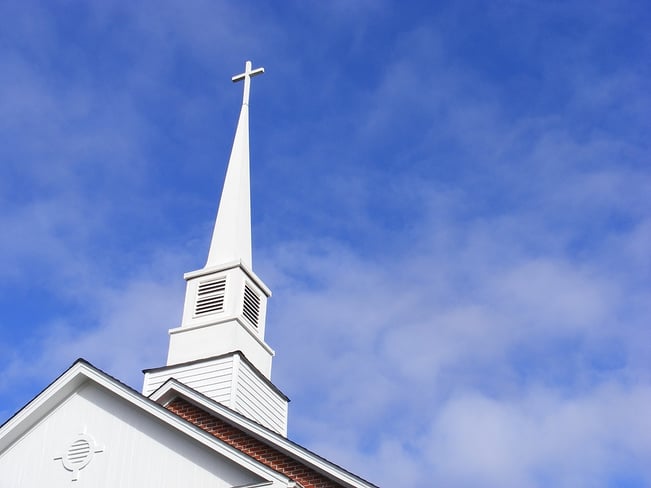
In recent times, churches across the United States have faced significant difficulty in securing insurance coverage. Notably, major insurers such as Church Mutual, Brotherhood Mutual, and GuideOne are increasingly opting to cancel or not renew church policies. This trend is mirrored by other large insurance companies, including Hartford, USLI, and Liberty Mutual, which are still writing those types of policies but have become very particular about what they will accept.
In this article, we’ll explore the challenges congregations face regarding insurance and discover ways churches can stay on track and achieve stability.
The Obstacles with Church Insurance
Churches are navigating a tough course, facing the hurdles of rising costs, natural disasters, and shifting insurer decisions. Many insurers, even those traditionally focusing on church properties, are dropping coverage, leaving congregations scrambling for alternatives.
Several factors contribute to this difficult route, including:
- Age of Church Buildings: Many insurers are unwilling to cover older church buildings, particularly those over 50 years old. The perceived risk associated with these aging structures is a significant deterrent. This perception by insurers increased during and after the COVID-19 pandemic because many parishes abandoned their buildings for an extended time, causing lapses in maintenance.
- Sexual Misconduct Coverage: The rise in sexual misconduct claims and recent state law changes have led insurers (including Hartford and Liberty Mutual) to limit or eliminate coverage options for sexual misconduct. Nineteen states currently do not have a civil statute of limitations for most child sexual abuse claims. Many other states are looking into eliminating theirs as well, allowing survivors to sue for damages at any time.
- Parsonage Coverage: Insurance companies are also restricting coverage for parsonages—the homes where pastors and staff reside—due to rising claims and potential risks.
- Increased Costs: Churches are now finding themselves needing to secure policies in the excess insurance marketplace, where premiums have surged to at least triple the previous rates. This sharp increase puts additional strain on church budgets, which are typically set by boards or congregational votes.
- Lack of Guaranteed Coverage: Longevity with an insurance provider no longer ensures continued coverage. Insurers are now focusing on recent claims history, often evaluating only the past 3-5 years rather than the entire period of coverage.
- Financial Stability of Insurers: Brotherhood Mutual's recent downgrade by AM Best, a credit rating agency that specializes in the insurance industry, makes congregations aware of the fragility of coverage. AM Best has also placed Church Mutual under review this past spring.
- Regional Risks: This is an increasingly common issue. While Louisiana and Florida have long been “hard-to-place states” due to storms and hurricanes, more states are joining them, such as Oklahoma (due to tornadoes), Missouri (hailstorms), and New Mexico (fires). Insurers are now including areas that have been considered safe in the past. Due to the factors mentioned, some church representatives have decided to self-insure their buildings, opting only for liability coverage and praying that their buildings can fair natural disasters.
Strategies for Clearing Insurance Cost’s Hurdles
Despite these challenges, churches can take proactive steps to manage their insurance premiums, mitigate risks, and maintain coverage:
- Minimize Small Claims: Insurers are increasingly raising deductibles as a response to frequent small claims. To avoid this, churches should consider paying out of pocket for minor repairs and maintenance, as recurring claims can signal to insurers a pattern of risk. Filing a claim for a damaged fence or a broken stair railing is not worth the risk of being forced to go into the excess market.
- Maintain Property: Regular upkeep of church properties can significantly impact insurance costs. Ensure that roofs are well-maintained and not older than 20-25 years, and keep up with inspections of electrical systems, plumbing, and heating. Proper maintenance reduces the likelihood of claims and can help in retaining coverage. Have a process in place for keeping records and receipts.
- Implement Guidelines for Sexual Misconduct: With the rise in sexual misconduct claims, it is essential for churches to establish clear guidelines and training for all employees and volunteers working with youth. This includes implementing background checks and screening processes. Proactive measures and well-documented policies can mitigate risks and demonstrate to insurers that the church is managing potential risks effectively.
- Research the Insurers: It’s crucial for churches to scrutinize the financial stability and ratings of their insurance providers to ensure they are not left exposed. And being proactive in risk management can help mitigate the impact of rising premiums.
By proactively addressing these steps, churches can reduce risks, maintain coverage, and navigate the challenging insurance landscape more effectively.
Remember, a well-prepared church not only protects its physical assets but also ensures a safe and secure environment for its congregation.
This article is not intended to be exhaustive, nor should any discussion or opinions be construed as legal advice. Readers should contact legal counsel or an insurance professional for appropriate advice.